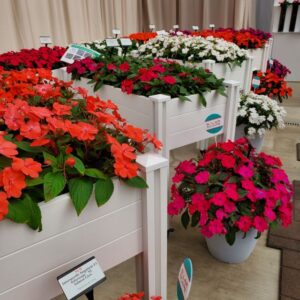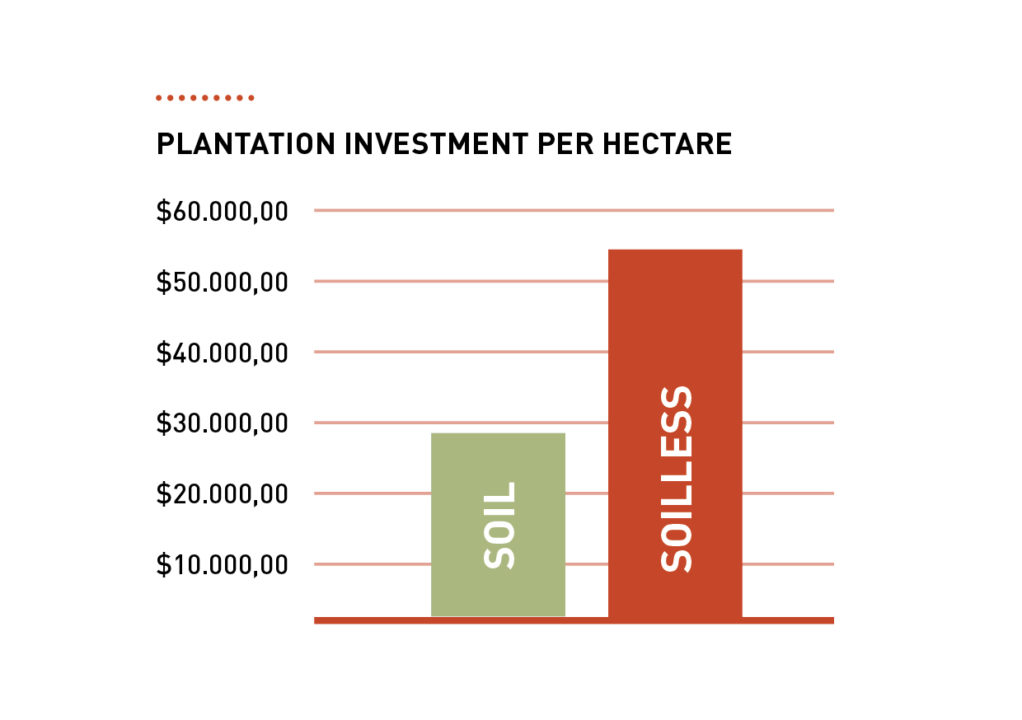How Plant Breeders Are Getting Back to Focusing on New Genetics

High-tech breeding is helping breeders such as Danziger turn out products that make it easier for growers to produce a reliably consistent crop. Photos: Janeen Wright
Breeders are back to doing what they do best — shoring up and feeding the plant pipeline. Though they still have challenges to navigate in today’s business and economic conditions, breeders continue to exhibit resiliency and optimism, proving they’re adaptable and responsive enough to meet their customers’ needs.
“Current trends influencing plant breeders revolve around global issues, such as energy costs, environmental concerns, and supply chains as well as social media and its influence over consumer acceptance,” says Chuck Pavlich, Director of New Product Development and Marketing at Terra Nova Nurseries. “The current challenges in breeding are to some extent technical, involving sourcing new materials, recent importation restrictions, and keeping pace with the giant, global breeding companies that have cutting-edge technologies at their fingertips, such as CRISPR technology, GMOs, and genetic insertion.”
Supply Chains Are on a Slow Path to Recovery
Most notable lately, breeders have dealt with their fair share of supply chain challenges. While conditions are slowly improving, new pressures have cropped up such as rising fuel and heating costs. Joshua Brown, owner of Predatory Plants, has seen some of those record-breaking inflation numbers impact his business.
“The materials we purchase to support our breeding programs (e.g., soils, plastic materials, tissue-culture media, etc.) have all increased steeply in cost over the past few quarters,” he says. “Being in California, we face the additional pressure of extremely high fuel costs (gasoline for transporting materials into and out of our facilities is over $6 per gallon and propane to heat our greenhouses is over $5 per gallon).”
While much of the talk right now centers on overhead costs, Bart Hayes, Sales Manager at Westhoff, says breeders and growers can’t lose sight of the fact that longer supply chains, such as those using offshore resources, are not resilient enough to hold up during world-impacting events such as the pandemic. He says making a choice to buy supplies from local or regional sources may be more expensive in the short term, but in the long term the payoff will be secured inputs.
If anything, recent events have shown breeders can accommodate growers’ needs by leveraging their global supply chains and robust product portfolios. This has particularly been true on the seed breeding side, where it isn’t as easy to shift priorities and products so quickly as it is for vegetative annuals, says Jason Jandrew, Director of Plant Breeding at PanAmerican Seed.
“As a strategy, we like to have a very diversified portfolio of products to point to in support of whatever our customers’ needs might be,” he says. “With seven global breeding locations around the world, in many circumstances PanAmerican Seed is breeding and trialing in our target markets and have the same climate and economic challenges as our customers do. I believe this makes us more adaptive and responsive to changing developments in our customers’ needs.”

Global supply chains and diverse product portfolios have allowed breeders such as PanAmerican Seed to adapt and respond to changing customer needs.
It’s All About Creating Value
Meeting customer needs during unprecedented circumstances has demanded breeders’ attention during the last couple of years, with most of the focus being on inventory management. Post-pandemic, they’re turning their sights on other important areas.
“With inflationary costs impacting businesses and consumers worldwide, the focus of many ornamental breeders will need to be on value-added options such as performance, aesthetics, or design application, because competition for me-too products will see price pressure push-back down the supply chain at a time when all other costs are rising,” says Philip Townshend, Operations Director for Anthony Tesselaar International.
“It’s not enough to sell a single-attribute plant,” says Kip McConnell, Vice President of Business Development at Plant Development Services. “Whether the plant is a dwarf variety, more cold-hardy, or longer blooming, there has to be something about these plants that elevates them above previous offerings on the market.”
New products that are differentiated and significant are very much a driver in market entry, according to Steve Rhinehart, North American Program Manager for Kientzler, who says products in demand include grower-driven breeding improvements, products that increase shelf appeal, and products that improve garden performance.
“Improved breeding technologies have enabled performance leaps and set new standards for product performance,” Rhinehart says of new products. “This is the age of superior garden performance products.”
It’s Never Too Early to Look Toward 2024
The newest high-tech breeding is making it easier for breeders to bring new and exciting, value-added genetics to market quicker than ever before. This is good news for breeders.
“It is getting easier to duplicate desirable traits and habits in existing lines for a more uniform series,” says Mike Fernandez, Marketing Manager at Danziger North America. “This is exciting to us because it makes it easier for the growers to produce a reliably consistent crop,” he says.
As breeders turn back to bolstering their portfolios with improved and new products, Jandrew sums up their sentiments nicely.
“I would like growers to be thinking about what product attributes they will need for 2024 and beyond,” he says. “Their voice is very welcome in that conversation. Dear Growers: Please, let us know what you need or will need in the future. We always appreciate hearing from you.”

Monrovia is one of many breeders that keeps an eye on consumer trends to help determine the directions it takes with its plant selections. The Garden of Abundance trend mixes edible plants in with other landscape items such as trees and shrubs.
Consumer Trends Influencing Plant Breeding
Consumer gardening trends and consumer behavior research often give breeders insights into what type of plants to select and introduce to the market. Here are three trends Monrovia is watching for 2023, according to Kate Tamony, Chief Marketing Officer and Trendspotter at Monrovia Plants.
- The Garden of Abundance trend is about making your garden feel like a modern-day Garden of Eden — a bit wild, very productive, and connected to the earth. It means mixing in edible plants with the rest of your landscape, not containing them to raised- bed plots.
- The New Victorian Trend is fueled by renewed interest in traditional garden plants that bring a sense of nostalgia, such as roses, lilac, hydrangea, and hollyhock. These classic, pretty plants bring a sense of history and tradition without the slight chaos of the typical cottage design.
- Waterwise Plants: Drought, extreme weather conditions, and a renewed interest in water conservation across the country mean waterwise gardens are more than a trend. Homeowners are interested in plants that are climate-appropriate, with lower water needs. But they don’t want to sacrifice beautiful blooms, bold color, and lush foliage.










